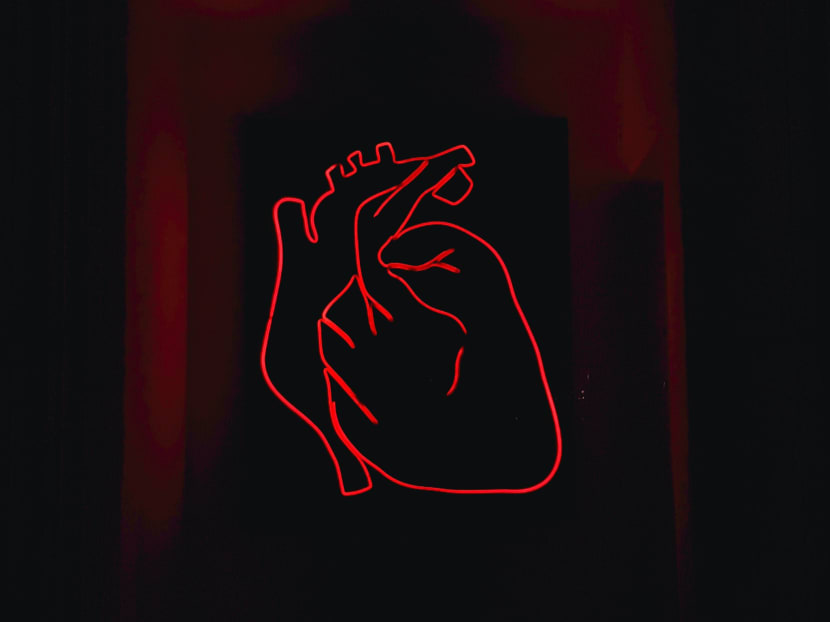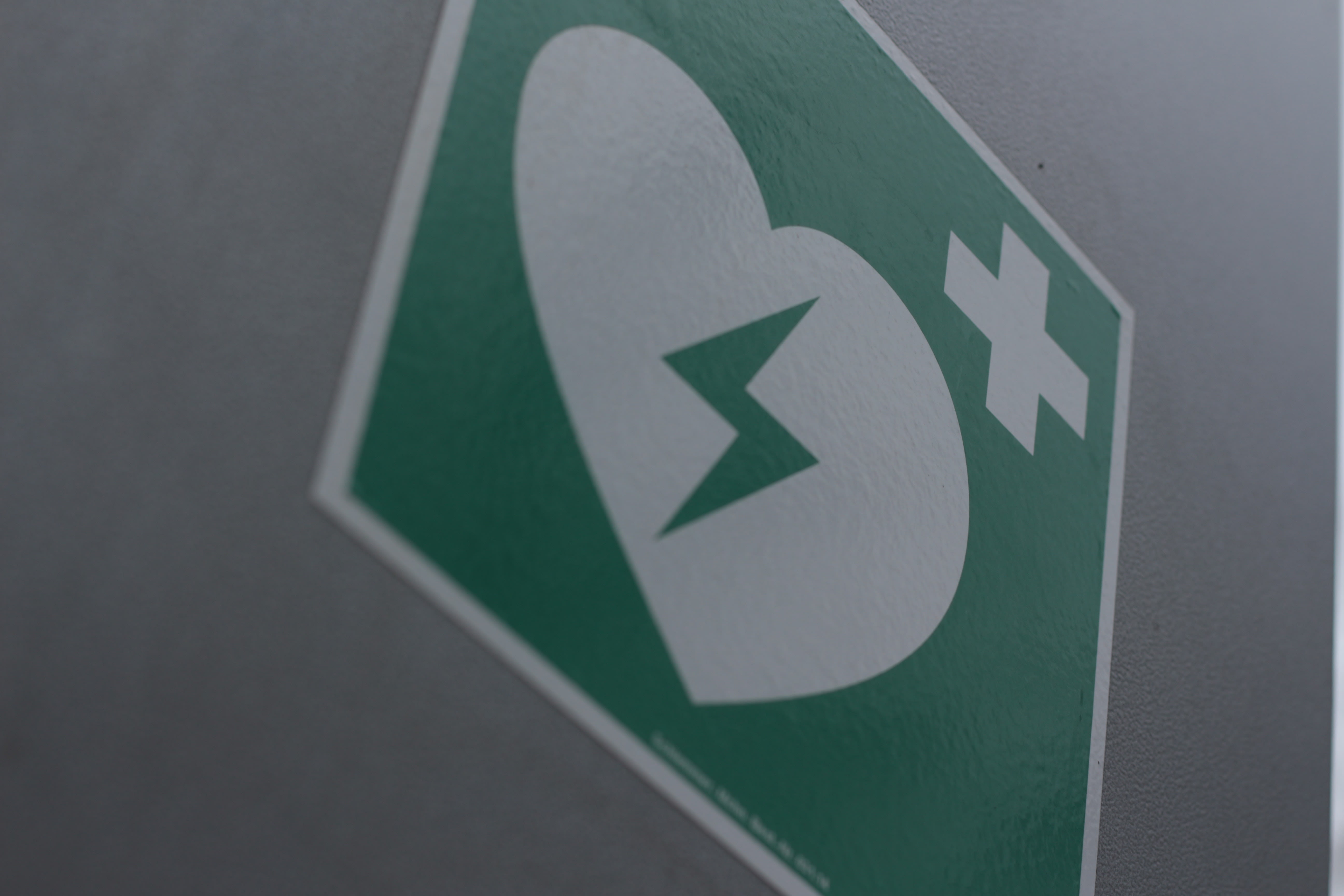‘Like water pressing on me’: Double blow for woman, 40, who has heart failure after near-fatal heart attack
SINGAPORE — When Ms Tira Ismail felt as if she was running a race while walking leisurely with friends in December 2020, it was a telling sign of heart trouble.

- Cardiovascular disease is the leading cause of death among women in Singapore but many are still unaware of the symptoms and risks
- Cardiologists said misconceptions about heart diseases in women may lead to a delay in diagnosis and treatment
- A 40-year-old woman talks about her near-fatal heart attack and subsequent heart failure diagnosis
- Heart attack is the most common cause of heart failure
- She urged younger adults and women not to ignore the warning signs and go for regular health checks
SINGAPORE — When Ms Tira Ismail felt as if she was running a race while walking leisurely with friends in December 2020, it was a telling sign of heart trouble.
Over the next few days, the unexplained breathlessness intensified and she often felt as if “something was stuck” in her chest.
“Climbing the overhead bridge near where I live to get to work every day used to be effortless. But the breathlessness got so bad that I started pulling down my mask because I could not breathe properly,” she said.
Only 39 then, she did not suspect that she was in poor health.
A pastry chef working in a fast-paced environment, she chalked it up to a lack of rest.
In January last year, Ms Tira suffered a near-fatal heart attack. A month later, she was diagnosed with heart failure.
She is now on long-term medications to manage her ailing heart.
Cardiologists who spoke to TODAY said that although there are many reasons why heart failure can occur, a heart attack episode is the most common cause of heart failure. It is a chronic and progressive condition in which the heart muscle is unable to pump enough blood to meet the body’s needs for oxygen.
Having experienced a double blow to her heart health, Ms Tira, now 40, wants to sound a warning for others, in particular women since it is the top cause of death for them.
She urged younger people as well, particularly those with a family history of heart disease, to go for regular health checks and not ignore the red flags when their health feels “off”.
Her father’s family has a history of heart conditions and diabetes. An aunt, who is in her 60s, went through a similar ordeal a few years back.
“Most people don’t think heart failure would happen to younger people; we think it usually happens to older people above 50. I didn’t think it would happen to me as I’m still young,” she said.
“In hindsight, I should have been more diligent in going for regular health check-ups, considering my family history.”
Besides a family history of heart disease, Ms Tira was also a heavy smoker, going through up to one-and-a-half packets of cigarettes daily.
LEADING CAUSE OF DEATH AMONG WOMEN
Cardiovascular disease — which includes heart disease and stroke — is the leading cause of death among women in Singapore but many are still unaware of how vulnerable they are.
A 2020 survey commissioned by the Singapore Heart Foundation found that just 9 per cent of Singaporean women know that heart disease and stroke are the top causes of death for women here.
Only 8 per cent had a conversation on cardiovascular disease-related topics with their doctor in the 12 months before the survey.
Dr Lin Weiqin, clinical director of the heart failure programme and consultant from the department of cardiology at National University Heart Centre, Singapore (NUHCS), said that many women believe that heart diseases are “ailments of the elderly” or conditions that predominantly affect men.
However, the diseases are common among women, especially after menopause — unlike pre-menopausal women who generally have a lower risk of heart attacks than men of the same age due to the hormone oestrogen having a protective effect on the heart vessels.
“Men are more likely to present with a ‘typical’ symptom of chest pain. Women are more likely to have non-specific symptoms when they develop a heart attack such as shortness of breath, palpitation, dizziness and vomiting.Dr Lin Weiqin, consultant from the department of cardiology at National University Heart Centre, Singapore”
Misconceptions about symptoms may also lead to delays in diagnosis and treatment.
For example, it is not uncommon for women to attribute symptoms of heart failure such as shortness of breath, lethargy, effort intolerance and leg swelling to menopause or a hormonal imbalance, Dr Lin said.
Associate Professor David Sim, deputy head and senior consultant from the department of cardiology at National Heart Centre Singapore (NHCS), said that in younger women, a possible case of heart failure may be diagnosed as asthma, bronchitis, gastric acid reflux before arriving at the diagnosis of heart failure, resulting in a delay in treatment.
Assoc Prof Sim is also the director of NHCS’ heart failure programme.
In the case of a heart attack, there are major differences in symptoms between men and women.
Dr Lin of NUHCS said: “Men are more likely to present with a ‘typical’ symptom of chest pain.
“Women, on the other hand, are more likely to have atypical, non-specific symptoms when they develop a heart attack such as shortness of breath, palpitation, dizziness and vomiting.”
BLOCKED ARTERIES ALMOST KILLED HER
Like many younger adults who has had heart attacks, Ms Tira did not know she was experiencing symptoms of heart problems until it was almost too late.
She recalled waking up in the middle of the night at around 4am, drenched in cold sweat, feeling lightheaded and breathless.
“My body felt like it was going to shut down and I felt like I was going to die. I drank some warm water but the feeling did not pass,” she said.
Her mother called for an ambulance. At the time, her body temperature was colder than normal at 34°C.
She lost consciousness on her way to the hospital and did not know what happened until she woke up the next morning in a high dependency ward, hooked up to various machines and oxygen tanks.
“The cardiologist said I was very fortunate to have arrived early or I would have died. My blocked arteries were not supplying sufficient blood and oxygen to my brain.”
Several of her arteries were found to be obstructed, including one with a 99 per cent blockage. This drastically reduced blood flow to her heart.
She survived the ordeal after receiving an emergency angioplasty, a procedure used to widen blocked or narrowed coronary arteries.

WHO IS AT RISK
Certain factors may increase the risk of a heart attack at a younger age, the Singapore Heart Foundation said:
- Family history of early heart disease
- People with poorly controlled high blood pressure, high cholesterol and diabetes
- People who are overweight
- People who smoke
In a study of more than 15,000 heart attack patients in Singapore, published in the American Journal of Cardiology in 2016, it was found that almost eight in 10 of young heart attack patients aged 40 and younger are smokers.
One in three of the study’s younger patients had a family history of premature coronary artery disease.
WHY A HEART ATTACK MAY LEAD TO HEART FAILURE
Heart failure may be less common for younger adults, but some of them may develop heart failure at a younger age.
The doctors who spoke to TODAY said that a heart attack is the most common cause of heart failure here.
To understand the link, Dr Lin from NUHCS explained that in a heart attack, there is a sudden rupture of cholesterol plaque in the lining of the heart blood vessel wall.
This results in a blood clot formation in the heart artery, which causes an abrupt disruption of blood supply to the heart muscle tissue.
“Patients usually complain of chest pain when this happens. If left untreated, there will be heart muscle death and weakening of the heart pumping function,” Dr Lin said.
“Following a heart attack, patients might suffer from irreversible damage to their heart muscles and can develop heart failure later on.”
Other risk factors of heart failure include:
- Diabetes that occur when the person is at a younger age
- Poorly controlled high blood pressure
- Obesity
- Family history of genetic heart conditions
- Heart defects at birth
- Certain diseases such as liver and kidney failure
“Women who are survivors of childhood cancers and who received certain kinds of chemotherapy medications are also at risk of developing heart failure in early adulthood.
“Some women develop heart failure during pregnancy, a condition termed peripartum cardiomyopathy,” Dr Lin added.

WHAT HEART FAILURE FEELS LIKE
After surviving a heart attack, Ms Tira thought the worst was over and worked on recuperating at home. About a month later, she was diagnosed with heart failure.
Besides experiencing worsening breathlessness, she also had swollen legs and hands due to water retention, which was suggestive of heart failure.
“I was breathless after walking around just for 30 seconds,” she recalled.
“At first, I thought it was because of my prior heart attack episode but the breathlessness was way worse than before. It made me feel as if water was pressing down on me and I was drowning inside.”
X-rays showed excessive fluid in her lungs, and nearly one litre of fluid was removed through a procedure known as pleural effusion drainage.
With heart failure, the heart pumps less blood to the kidneys and excess fluid builds up because the body's circulatory system is not operating well.
Assoc Prof Sim said: “In severe cases, the water retention can be in excess of 10kg. Water retention can occur in the lung tissue, legs and abdomen.”
“It took me some time to get used to this new norm of people rushing in to help me, and listening to my body when I feel like I’m exerting myself.Ms Tira Ismail on how heart failure has affected her”
The second diagnosis hit Ms Tira hard. With a reduced heart function, she is worried that life may never be the same again for her.
“I felt quite depressed hearing the diagnosis as I’m not able to go on with my lifestyle as before. In the past, I used to carry 20kg trays of tiramisu on my own. Now I need my colleagues to help me carry heavy things, which makes me feel quite useless,” the pastry chef said.
“The condition is not something I can shake off and get on with life. It took me some time to get used to this new norm of people rushing in to help me, and listening to my body when I feel like I’m exerting myself.”
She is thankful to have a supportive boss and colleagues who have been looking out for her at work.
They help her to carry heavier items, check that she has healthy meals and ensure the kitchen floor is dry so that she does not slip and fall.
They also remind her to take her medication regularly.
Ms Tira is now taking at least 10 different types of medications, and the thought that she would have to take it for a long time on a daily basis fills her with dread.
“It’s quite depressing to take so much medication. Before my heart attack, I would just take paracetamol once in a while when I felt unwell. But now, this is something I have to take every day.”
MORE EFFECTIVE TREATMENTS AVAILABLE
Assoc Prof Sim from NHCS said that there is an expected 50 per cent risk of mortality (death) within five years of a heart failure diagnosis.
However, there are now more effective treatment options for heart failure patients. Four classes of drugs have been shown in clinical trials to reduce mortality and readmission for heart failure, he added.
Dr Lin from NUHCS said that in cases of heart failure linked to a previous heart attack, doctors will target the traditional risk factors for cardiovascular diseases, such as high blood pressure, high cholesterol, diabetes mellitus, smoking and obesity.
Suitable patients will be offered procedures or surgeries to restore blood flow to the affected blood vessels. They will also be put on medications that are proven to improve long-term outcomes for heart failure, he added.
No two heart failure patients are alike and treatment regimens are tailored by the cardiologist to suit the patient’s condition, Dr Lin said.
“With the right treatment regime, we have managed to reduce symptom burden for many heart failure patients. A significant proportion of them return to leading active lifestyles. Some patients even have their heart functions returning to normal,” he added.

Ms Tira’s lifestyle and eating habits have changed drastically.
She went cold turkey and stopped smoking after her heart attack, and reduced her intake of salty and fatty food as well as alcohol. Salads and grilled fish are now her preferred choice of meals.
“I love to eat — laksa, mee goreng, et cetera — and I really love to snack and eat fast food. But I must give up eating all of those unhealthy food now, especially salty food, because that will worsen the water retention,” she said.
Her near-fatal experience spurred some of her colleagues and friends to relook their habits.
“Everyone was shocked that I had a heart attack at this age. When I went back to work, I noticed some colleagues cutting down on smoking and slowly changing their lifestyle. Some of my friends have also gone for their health screenings,” she said.
Ms Tira hopes that she can overcome this difficult period in her life.
“I want to overcome this breathlessness and this feeling of being tired and weak. All I wish for right now is to go back to my normal cheerful, bubbly self.”
WAYS TO REDUCE HEART DISEASE RISKS
While there are some risk factors of heart disease that cannot be changed, like family history, there are other ways to change one’s lifestyle and personal habits to improve heart health.
“Leading a healthy lifestyle is the best way to minimise the risk of cardiovascular diseases, including heart failure,” Dr Lin Weiqin from the department of cardiology at the National University Heart Centre, Singapore said.
Heart-healthy habits include:
- Achieving at least 150 minutes of moderate intensity exercise a week
- Having a balanced, healthy diet by following the ‘Healthy Plate’ visual guide by the Singapore Health Promotion Board when planning for healthier meals. Basically, it is to fill a quarter of a plate with wholegrains, another quarter plate with good sources of protein and half the plate with fruit and vegetables
- Seeing doctors regularly to ensure good control of risk factors for heart disease, for people who are diagnosed with hypertension, high cholesterol and diabetes
- Seriously considering quitting smoking, for all people who smoke






